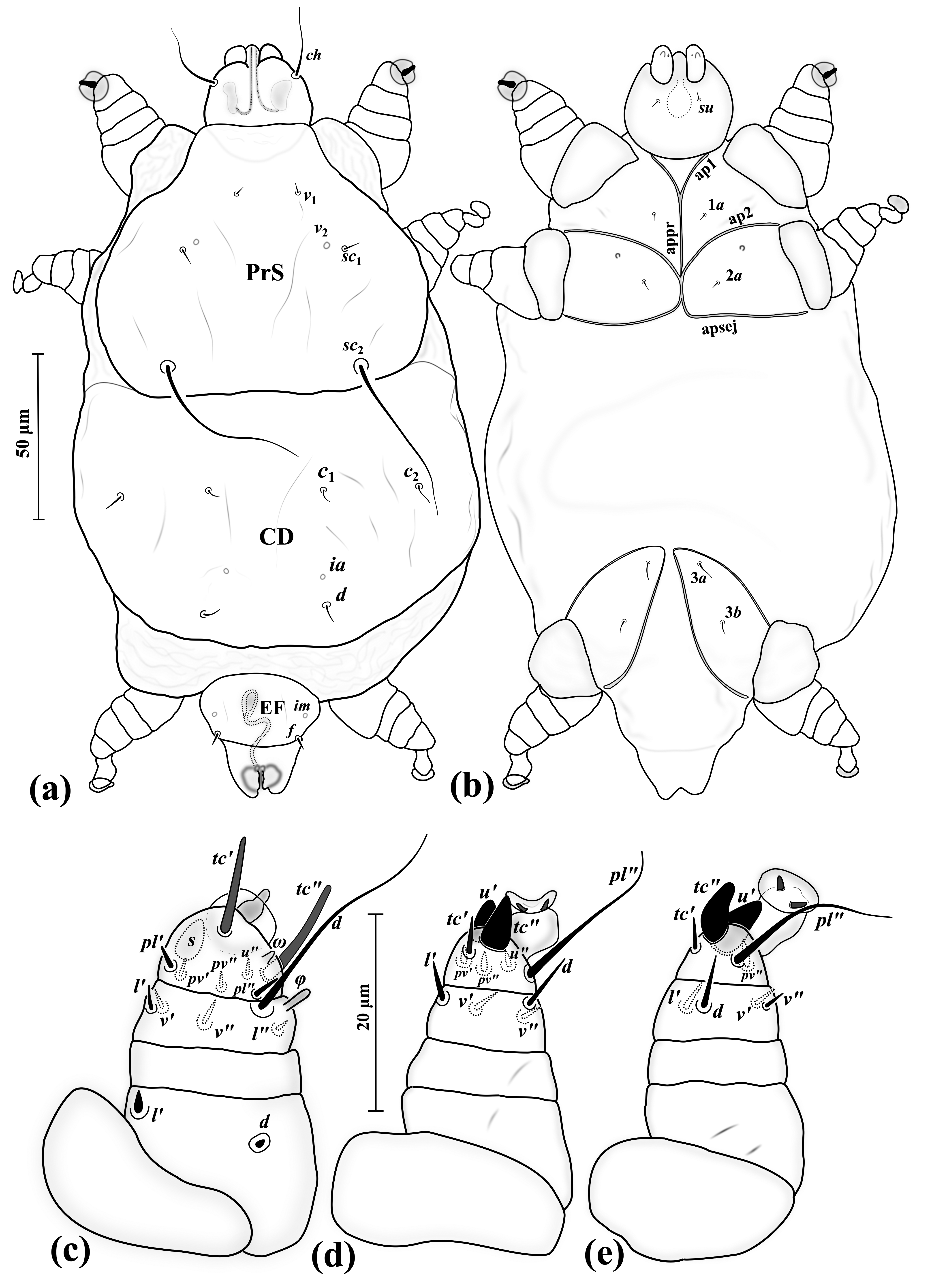|
Copidognathus Longispinus
''Copidognathus longispinus'' is a species of mite in the Halacaridae Halacaridae is a family of meiobenthic mites found in marine, brackish, and freshwater habitats around the world. It includes more than 1100 described species belonging to 64 genera It is the largest marine radiation of arachnids. Description ... family. The scientific name of this species was first published in 1985 by Bartsch & Iliffe. References {{Taxonbar, from=Q13496428 Trombidiformes Animals described in 1985 ... [...More Info...] [...Related Items...] OR: [Wikipedia] [Google] [Baidu] |
Mite
Mites are small arachnids (eight-legged arthropods). Mites span two large orders of arachnids, the Acariformes and the Parasitiformes, which were historically grouped together in the subclass Acari, but genetic analysis does not show clear evidence of a close relationship. Most mites are tiny, less than in length, and have a simple, unsegmented body plan. The small size of most species makes them easily overlooked; some species live in water, many live in soil as decomposers, others live on plants, sometimes creating galls, while others again are predators or parasites. This last type includes the commercially destructive ''Varroa'' parasite of honey bees, as well as scabies mites of humans. Most species are harmless to humans, but a few are associated with allergies or may transmit diseases. The scientific discipline devoted to the study of mites is called acarology. Evolution and taxonomy The mites are not a defined taxon, but is used for two distinct groups of arachnids ... [...More Info...] [...Related Items...] OR: [Wikipedia] [Google] [Baidu] |
Halacaridae
Halacaridae is a family of meiobenthic mites found in marine, brackish, and freshwater habitats around the world. It includes more than 1100 described species belonging to 64 genera It is the largest marine radiation of arachnids. Description and life cycle Halacarids have four pairs of legs (as adults and nymphs; see below), of which the first two pairs point forwards and the last two pairs point backwards. This is a synapomorphy of the group. Another synapomorphy are four plates on the dorsal surface of the body, except for several genera with reduction of certain plates. The life cycle of halacarids consists of egg, larva, 1-3 nymphal stages (protonymph->deutonymph->tritonymph) and adult. Additionally, between each of the free-living stages (i.e. except for the egg) is a quiescent pupal stage. * Eggs are usually deposited by an adult female in a substrate, with the help of an ovipositor. * Larvae have three pairs of legs, with each leg five-segmented, and lack a genital p ... [...More Info...] [...Related Items...] OR: [Wikipedia] [Google] [Baidu] |
Trombidiformes
The Trombidiformes are a large, diverse order of mites. Taxonomy In 1998, Trombidiformes was divided into the Sphaerolichida and the Prostigmata. The group has few synapomorphies by which it can be defined, unlike the other major group of acariform mites, Sarcoptiformes. Its members include medically important mites (such as '' Demodex'', the chiggers, and scrub-itch mites) and many agriculturally important species, including the spider mites (Tetranychidae). The superfamily Eriophyoidea, traditionally considered members of the Trombidiformes, have been found to be basal mites in genomic analyses, sister to the clade containing Sarcoptiformes and Trombidiformes. The 2004 classification retained the two suborders, comprising around 125 families and more than 22,000 described species. In the 2011 revised classification, the order now contains 151 families, 2235 genera Genus ( plural genera ) is a taxonomic rank used in the biological classification of living and fo ... [...More Info...] [...Related Items...] OR: [Wikipedia] [Google] [Baidu] |
_Lorryia_formosa_2_edit.jpg)
